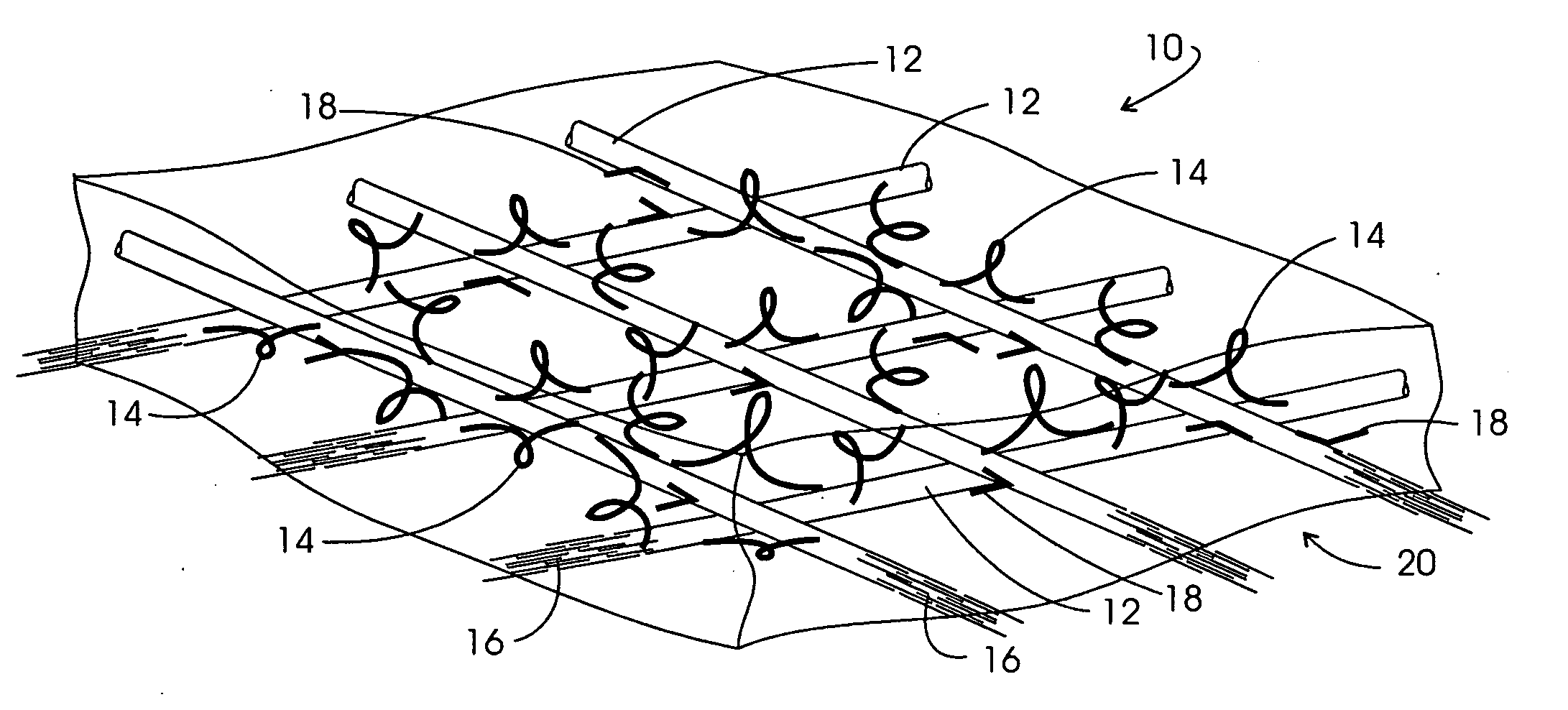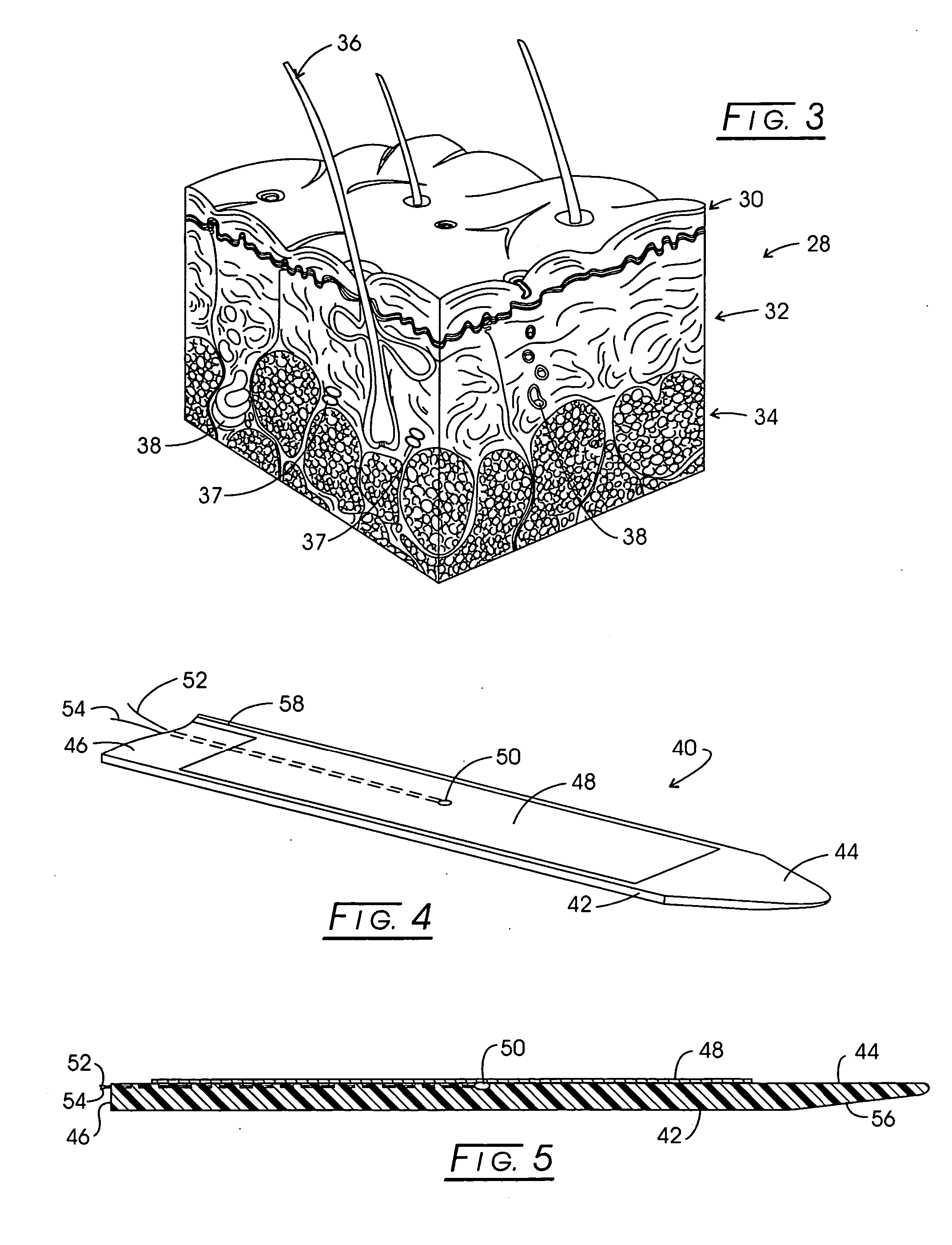Method and apparatus for carrying out the controlled heating of tissue in the region of dermis
a tissue and dermis technology, applied in the field of dermis tissue controlled heating, can solve the problems of skin requiring 4-6 months or more of healing, limited efficacy of techniques, and patients typically experiencing significant side effects
- Summary
- Abstract
- Description
- Claims
- Application Information
AI Technical Summary
Benefits of technology
Problems solved by technology
Method used
Image
Examples
Embodiment Construction
[0119] The discourse to follow will reveal that the implants and method described were evolved over a sequence of animal (pig) experiments, both ex vivo and in vivo. This work involved the utilization of radiofrequency excited bipolar electrodes combined with an electrically and thermally insulative support and shield as well as with resistor segment-based implants also provided with a noted thermal and electrically insulative shield and support. Certain of the experiments and their results are described to, in effect, set forth a form of development history giving an insight into the reasoning under which the instant method and apparatus developed.
[0120] The arrangement of the physical structure of the dermis is derived in large part from the structure of the extra cellular matrix surrounding the cells of the dermis. The term extra cellular matrix refers collectively to those components of a tissue such as the dermis that lie outside the plasma membranes of living cells, and it co...
PUM
 Login to View More
Login to View More Abstract
Description
Claims
Application Information
 Login to View More
Login to View More - R&D
- Intellectual Property
- Life Sciences
- Materials
- Tech Scout
- Unparalleled Data Quality
- Higher Quality Content
- 60% Fewer Hallucinations
Browse by: Latest US Patents, China's latest patents, Technical Efficacy Thesaurus, Application Domain, Technology Topic, Popular Technical Reports.
© 2025 PatSnap. All rights reserved.Legal|Privacy policy|Modern Slavery Act Transparency Statement|Sitemap|About US| Contact US: help@patsnap.com



